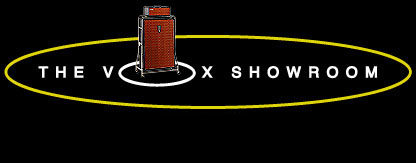Foundation Bass Speaker Enclosure
At just 26" tall, 22" wide and 15.5" deep, the original 1963 Vox Foundation Bass enclosure was barely large enough to house an 18" speaker.
The redesigned 1967 1x18" Foundation Bass enclosure was a bit larger than its predecessor. The new enclosure was two inches wider to match the width of the new solid state Foundation Bass head. The new enclosure was also 1" taller and 1.5" deeper than the original. The larger cabinet, combined with a tuned bass reflex port, improved bass response.
Foundation Bass "Roll-Away" Stand
Vox developed a two-piece "roll-away" stand for their solid state Dynamic Bass, Foundation Bass and Super Foundation Bass amplifiers.
The stand was included in the price of the amplifier except for the 1970 model year when it was an extra cost option.
The lower portion of the roll-away stand was a chrome plated tubular subframe that bolted to the bottom of the speaker cabinet. Two 4" casters were mounted to the rear of the subframe. Two vertical tubes extended to the floor from the front horizontal cross member, leveling the enclosure to the casters.
The upper portion of the roll-away stand had a chrome plated tubular frame that bolted to the front top edge and rear of the speaker cabinet (see photo at left). The amplifier head was secured to this frame with two wingbolts. When the head was removed for transport, the upper roll-away frame became a hand hold, allowing the cabinet to be tilted back on to the casters and rolled like a dolly.

